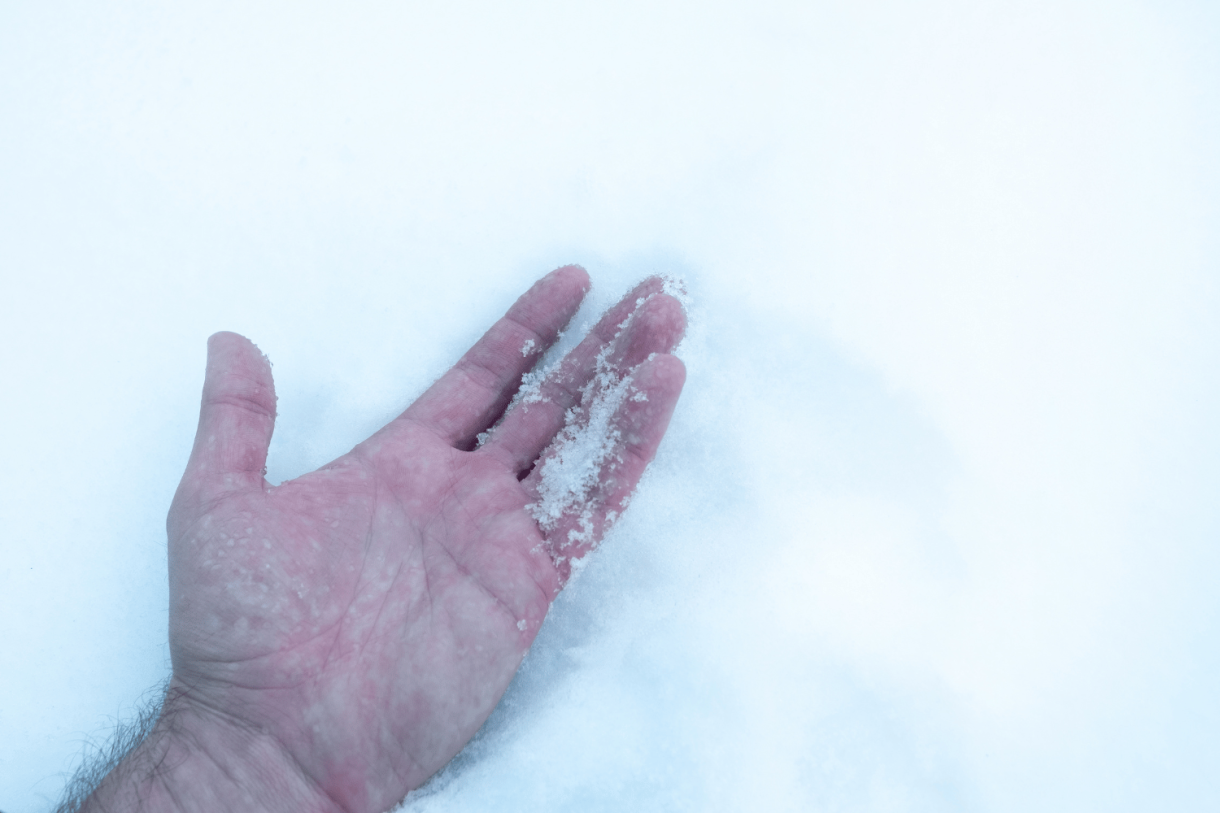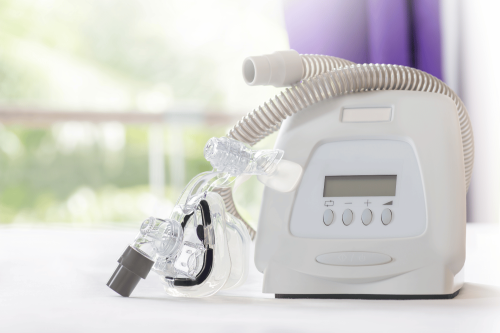
What is Frostbite?
Frostbite is a condition caused by the freezing of the skin and underlying tissues due to prolonged exposure to cold temperatures. It typically occurs in body parts farthest from the heart, such as fingers, toes, nose, and ears, as these areas are more prone to decreased blood circulation in cold conditions.
Mild frostbite, known as frostnip, may cause numbness and redness but is usually reversible with prompt warming. Severe frostbite, however, can result in permanent tissue damage, including blistering, blackened skin, and, in extreme cases, the potential need for amputation. Without early treatment, complications such as infections or nerve damage may develop, posing serious health risks.
People at higher risk include those who work outdoors, such as construction workers, mountaineers, or delivery personnel, as well as individuals participating in winter sports or exposed to extreme weather conditions without adequate protection. Frostbite can also occur at home during prolonged exposure to freezing temperatures or in unheated environments.
Recognizing the signs early—such as tingling, numbness, or skin discoloration—and taking immediate action to warm the affected area are critical in preventing long-term damage.
Types of Frostbite
Understanding the different stages of frostbite can help provide proper treatment. Here are the main types:
- Frostnip Frostnip is the mildest form of frostbite and typically affects the outer layers of the skin. It is temporary and does not cause permanent damage. Symptoms include tingling, redness, or pale skin. Frostnip can be treated by gradually warming the skin, such as using body heat or soaking the area in warm water. It is essential to address frostnip early to prevent it from progressing to more severe stages.
- Superficial Frostbite Superficial frostbite goes deeper than frostnip and impacts both the outer and underlying skin layers. Skin may appear pale, waxy, or even form ice crystals on its surface. Blisters may develop within 24 to 48 hours of exposure. Immediate care involves warming the affected area without applying direct heat, as rapid heating can worsen the damage. Medical attention may be required if blisters worsen or infection occurs.
- Deep Frostbite Deep frostbite is the most severe form, involving damage to muscles, tendons, and bones beneath the skin. The affected area may initially feel cold and numb, turning blue or black as tissue dies. This stage can result in permanent damage, including loss of sensation, tissue death, or even amputation in extreme cases. Prompt medical treatment, including rewarming and possible surgical intervention, is crucial to limit the extensive harm caused by deep frostbite.
Understanding these forms of frostbite is crucial to ensuring the right actions are taken, particularly in freezing conditions. Early recognition and intervention can make all the difference in minimizing long-term consequences.
Symptoms and Signs of Frostbite
The symptoms of frostbite depend on the degree of frostbite, the duration of cold exposure, and environmental factors such as wind chill. The severity is generally classified into three stages:
Severity of Frostbite
|
Degree |
Common Symptoms |
|---|---|
|
First-degree (Mild) |
Cold, pale, and numb skin |
|
Redness or slight discomfort upon rewarming |
|
|
Tingling or stinging sensations |
|
|
Second-degree (Moderate) |
Skin appears white or blue-gray |
|
Formation of clear fluid-filled blisters |
|
|
Intensified pain and swelling upon rewarming |
|
|
Third-degree (Severe) |
Waxy, hard skin texture |
|
Blistering, often filled with blood |
|
|
Loss of sensation due to nerve damage |
Frostbite on Exposed Areas
- Skin may appear discolored (white, grayish, or purplish).
- Hard, waxy, or frozen feeling upon touch.
- Areas most susceptible include fingers, toes, ears, nose, and cheeks.
Severe Frostbite Complications
- Deep tissue damage leading to blackened, necrotic tissue.
- Risk of severe infection or long-term scarring.
- Possibility of permanent loss of affected body parts due to amputation.
Early recognition of these symptoms and seeking prompt medical attention are essential to mitigate long-term damage. Identifying the stage of frostbite and intervening quickly can prevent irreversible harm.
How is Frostbite Diagnosed?
Doctors use several methods to diagnose frostbite and assess its severity:
- Clinical Evaluation The first step in diagnosing frostbite is a clinical evaluation, during which a healthcare provider examines the affected area for signs such as discoloration, swelling, and blisters or necrotic tissue. They may ask about the circumstances of the cold exposure, such as the duration of exposure, environmental conditions, and any symptoms the patient experienced, such as numbness or pain. For instance, if someone without proper gear spends an extended time in freezing temperatures, the doctor will use this information to assess the potential severity of the tissue damage, which helps determine the best course of treatment.
- Imaging Imaging techniques, such as X-rays or MRIs, can be used to visualize the extent of tissue damage from frostbite, particularly in severe cases. These tests help determine whether frostbite has caused underlying bone damage or whether there is a risk of deeper tissue necrosis. For example, an X-ray may be used to check for bone involvement. At the same time, MRI provides more detailed images of soft tissues, helping the healthcare provider devise an appropriate treatment plan and estimate the potential for recovery or permanent damage.
- Blood Tests Blood tests are often performed to detect complications of frostbite, such as infection or hypothermia. For instance, a complete blood count (CBC) can highlight signs of disease. At the same time, tests for kidney or liver function may be necessary if frostbite is accompanied by systemic complications or prolonged exposure. These tests ensure that underlying issues are addressed promptly, which is critical for improving outcomes in severe frostbite cases.
First Aid Treatment for Frostbite
Frostbite can cause significant damage to affected tissues, but prompt, effective first aid can help prevent further complications. Below are the essential first aid steps for frostbite, designed to ensure safety and promote recovery:
- Ensure Safety The first priority is to move the person to a warm, sheltered area away from the cold. This prevents further exposure to freezing temperatures, which could worsen the frostbite. For example, if someone is outside in extreme weather and starts showing signs of frostbite, take them indoors or to a protected space immediately to prevent further damage.
- Warm the Affected Area Carefully warm the frostbitten skin by soaking the affected area in warm water (98.6°F to 104°F) for 15 to 30 minutes. Avoid using hot water, as this can cause burns, and do not expose the area to direct heat from stoves, heating pads, or open flames. Gentle warming promotes blood flow and helps restore sensation to the frozen tissues.
- Remove Wet Clothing Replace any wet clothing with dry, insulating layers to prevent further heat loss. Wet materials can continue to draw heat away from the body, so it's essential to act quickly. Warm blankets or jackets are excellent options to keep the person comfortable while addressing other symptoms.
- Avoid Rubbing Do not rub or massage the frostbitten area, as this can further damage the tissues. Frostbitten skin and underlying tissues are delicate and can further deteriorate if subjected to mechanical pressure or friction.
- Seek Medical Attention For severe cases of frostbite, it is crucial to contact emergency services immediately. Signs of severe frostbite include numbness, discoloration, or hard, waxy skin. Proper medical treatment, including thawing procedures and pain management, will be necessary to minimize the chances of long-term damage or infection.
By following these steps, you can reduce the risk of frostbite and provide effective first aid until professional medical care is available.
Emergency Medical Care for Frostbite
In cases of severe frostbite, seeking emergency medical assistance is critical. If the injury is significant or you are unsure of its severity, call 911. When contacting emergency personnel, provide detailed information such as:
- The number of individuals affected and their current locations.
- The manner in which frostbite occurred (e.g., exposure to extreme cold).
- The condition of the frostbitten areas, including skin color, texture, and numbness.
- The length of time the individual has been exposed to freezing conditions.
Emergency medical professionals are trained to assess frostbite injuries, administer urgent treatment, and safely transport patients to a medical facility. For severe cases, treatments may include:
- Rewarming Techniques: Controlled rewarming in a medical setting to safely restore circulation, minimizing tissue damage.
- Medications: The use of pain relievers to manage discomfort and blood thinners to improve circulation and reduce clotting risks.
- Surgery: For cases involving extensive tissue necrosis, surgical intervention, including possible amputation, may be performed to remove dead tissue and prevent further complications.
Even in situations where frostbite seems minor, seeking medical advice is advisable. A healthcare provider can evaluate the injury thoroughly and recommend any additional care or rehabilitation needed.
Frostbite Prevention
Preventing frostbite is easier than treating it. Follow these tips to stay safe in cold weather:
- Dress in Layers: Wear insulated, waterproof clothing and cover exposed skin. Layering helps retain body heat and shields against wind chill.
- Protect Extremities: Wear gloves, thick socks, and a hat to keep your hands, feet, and ears warm, as these areas are most vulnerable to frostbite.
- Stay Dry: Wet clothing significantly increases heat loss. Be sure to change out of wet clothes immediately to keep your body temperature stable.
- Limit Exposure: If you’re spending time outdoors in extreme cold, take regular breaks indoors to warm up and prevent prolonged exposure to freezing temperatures.
- Avoid Alcohol: Consuming alcohol in cold weather increases heat loss and impairs your ability to recognize warning signs of frostbite.
- Monitor Weather: Stay informed about weather conditions, including extreme cold warnings, and plan your outdoor activities accordingly.
By following these simple prevention methods, you can reduce the risk of frostbite and stay safe in cold weather. Always prioritize warmth and preparation to protect yourself and others.
Stay Safe from Frostbite for a Healthier Tomorrow
Frostbite is a serious condition, but it can be prevented with the proper precautions. By dressing appropriately, limiting exposure to extreme cold, and recognizing the early signs, you can protect yourself and others.
If frostbite occurs, prompt first aid and medical attention are key to minimizing damage. Stay informed, stay prepared, and enjoy the winter season safely.
FAQ
How long does it take for frostbite to heal? Mild frostbite can heal in a few days, while severe cases may take weeks or even months.
Can frostbite cause permanent damage? Yes, severe frostbite can lead to permanent tissue damage or amputation.
What should I do if I suspect frostbite? Move to a warm area, soak the affected area in warm water, and seek medical help.
Can frostbite be reversed? Mild frostbite can be reversed with proper care, but severe cases may cause irreversible damage.
Who is most at risk for frostbite? People exposed to extreme cold, such as outdoor workers, hikers, and those without proper clothing, are at higher risk.








 Login with Google
Login with Google Login with Facebook
Login with Facebook